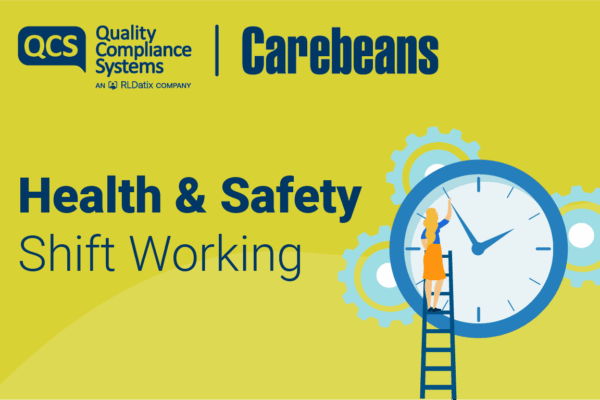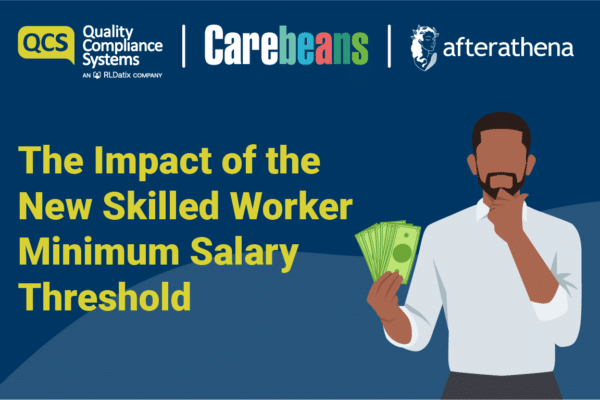This week is Falls Awareness Week, Prof Pip Logan, Dr Katie Robinson and Emma Self have some top tips in falls prevention for care providers
DOWNLOAD NOW
Alternatively, read it here:
Today sees the start of Falls Awareness Week, Prof Pip Logan, Dr Katie Robinson, and Emma Self outline an initiative called ACTiON FALLS alongside some top tips in falls prevention for care providers.
The issue
A fall for an older person can have a devastating impact on their quality of life, with many becoming so fearful of another fall that they become chair or bed bound.
Older people who fall can also experience physical injuries such as fractures, skin tears, bruising and pain. Care home staff and families can feel guilty and upset when a resident falls.
Falls are common, with a third of those over 65 years of age, and half of those over 80 falling at least once a year. In care home residents this is tripled and with 421,000 older people living in UK care homes, working to manage falls is a key priority to support resident care.
What have we been doing to try and help?
In 2010, a group of care home staff, residents, families, NHS clinicians and researchers came together to start to look at what could be done to reduce falls and injuries in care homes.
Over the course of 10 years, we have developed a falls management programme called ACTiON FALLS. The programme was designed to guide everyone in the home to see what could be done to reduce the risk of a fall.
The programme was tested in more than 80 care homes. In 2021 we published the findings of a research study in the UK which compared falls rates in care homes who had used the ACTiON FALLS programme with those that had not.
We found that falls could be reduced by 43% and each fall that was averted cost £191. We are now working to share these findings as they are useful to care home owners and staff, policy makers, the Department of Health and Social Care, residents and families.
What is the ACTiON FALLS programme?
The programme includes different resources – manual, checklist, app and video – that need to be completed which result in the reduction in falls, as well as formal training from a clinical expert in falls management.The programme examines what can be done in your home and for individual residents. For example: one resident might need their medication changing, more drinks during the day and a sensor beside their bed. Another resident might need a behaviour change routine to encourage them to use their walking aids.
What can you do to prevent falls in your care setting?
Based on our research we’ve compiled some practical tips to help you.
- All care home staff recognise that falls prevention is a “whole system” approach. This means dealing with the risk factors of individual residents and aspects of the home such as extra handrails or better lighting, or changes to working patterns.
- Care home teams create a Falls Champion in the care home. Support them to learn about falls prevention and to implement falls prevention practices in the home. Our research indicates this is a key role that is developed in the care home and is better if it is part of the care home staff structure.
- The ACTiON FALLs programme is used with every resident. The assessment and checklist are kept in the care plan and the actions are completed as soon as possible and recorded in the care plan.
- A continuous approach is used to keep reviewing what can be done to reduce falls and make sure managing falls is a high priority. For example, being creative to encourage hydration, maybe having smoothies, and recognising that referrals from a medication review might need chasing up.
- Falls are talked about in an open and honest way with residents, families, staff and care home owners. Falls are everyone’s concern from the cleaner to the manager to the owner. Keep a record of when and where people fall, especially people who fall frequently. Patterns of falling can be revealed, and these can lead to better ways of reducing the risk of falls.
- The assumption that falls in people who have dementia are unpreventable should be challenged. Our research found this belief to be detrimental to reducing falls rates and the programme was equally effective in people with dementia as with those without.
- Discuss the balance between fall prevention and maintaining activity and liberty. We found that risks could be better managed where falls were discussed with families as people moved into homes.
- Training from an expert in falls and the ACTiON FALLS programme helps care home staff learn how to use the programme and as many care home staff as possible should be trained in how to use the programme (we suggest at least 70%).
- Encourage staff, residents and visitors to use all of the materials. Keep copies handy to keep the falls conversations alive. There are freely accessible booklets, videos and case studies available:
React to Falls
and a free app:
Android – React to Falls
iOS – React to Falls - Consider setting up or joining local falls forums and groups for care homes to discuss falls. Our research showed that our programme can reduce the number of falls, but it did not stop all falls. As with all health and social care interventions, they don’t work with everyone, and care home staff should be able to talk freely about this.
Further Reading
- Research paper where the programme was evaluated – the bmj – Multifactorial falls prevention programme compared with usual care in UK care homes for older people: multicentre cluster randomised controlled trial with economic evaluation
- React to Falls website
- React to Falls App
Android
iOS - ACTiON FALLS materials – if you would like a copy of the ACTiON FALL programme please contact Sandy Burgess at the University of Nottingham [email protected]
- Enabling Research in Care Homes Network – this is a network that provides care homes with more information about how to take part in research and shares research findings. More information is available here






